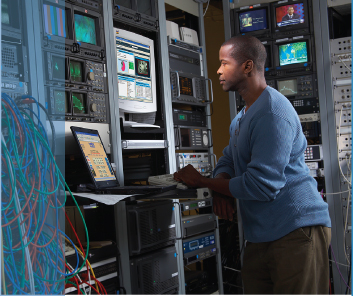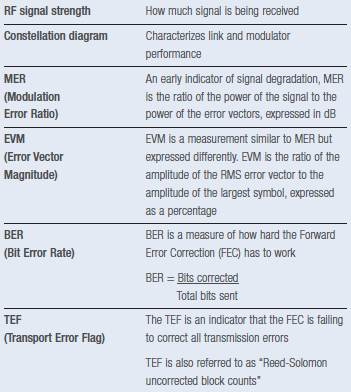


While digital cable, satellite and terrestrial systems provide higher-quality pictures compared to analog, these modern signals are also subject to noise, distortion and interferences. Most consumers are familiar with analog TV reception – if the picture quality is poor, an indoor antenna can be moved around until the picture improves. DTV is not as simple, however. Once reception is lost, the path to recovery isn’t always obvious.
The not-so-great solution to solving DTV reception problems is to make set-top receivers more tolerant to degraded signals. A better solution is for the network to maintain a clean, high-quality RF video signal. What’s the secret to maintaining a reliable, high-quality RF signal, you ask? Focusing on critical factors that may compromise the integrity of the system.
Those parameters include:

Bit Error Rate (BER)
The Bit Error Rate (BER) is the ratio of bits in error to total bits delivered. Early DTV monitoring receivers provided an indication of bit error rate as the only measure of digital signal quality. This is simple to implement since the data is usually provided by the tuner demodulator chipset and is easily processed.
However, tuners may often output BER after the Forward Error Correction (FEC) has been applied. It is better to measure BER before FEC (pre-Viterbi) so that an indication is given of how hard the FEC is working. After the Viterbi de-interleave process, Reed-Solomon (RS) decoding will correct errored bits to give quasi error-free signal at the output.
This is applicable when the transmission system is operating well away from the cliff point, where few data errors occur and pre-Viterbi bit error rates are near zero. As the system approaches the edge of the cliff, the pre-Viterbi BER increases gradually, the post-Viterbi more steeply, and the post-FEC (after RS) very steeply. Therefore, FEC has the effect of sharpening the angle of the cliff. As a result, very sensitive bit error rate measurements do give a warning, but usually too late for any corrective action to be taken.
It is still useful to display BER to allow documentation and quantification of the signal quality being delivered. BER can also be used to log long-term system trends. It is best used to identify periodic, transient impairments. BER measurements are usually expressed in engineering notation and are often displayed as an instantaneous rate and an average rate. Typical targets are: 1E-09, quasi error-free at 2E-04; critical BER: 1E-03; and out-of-service: greater than 1E-03.
To learn how to improve on BER (hint: it deals with using MER), and about the other critical RF test measurements that help detect DTV problems before viewers lose their service, check out this RF video white paper.


